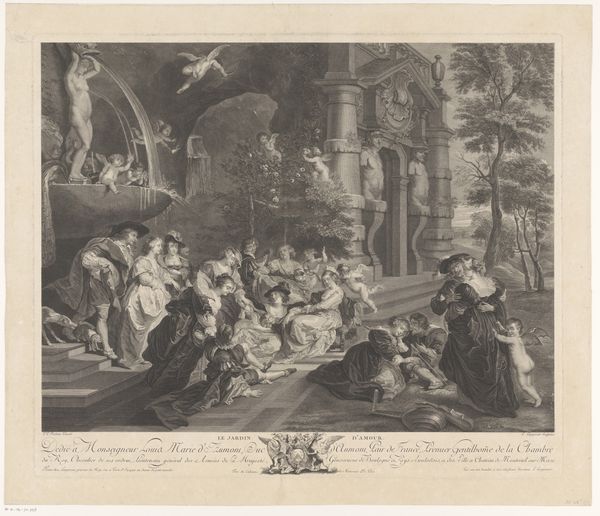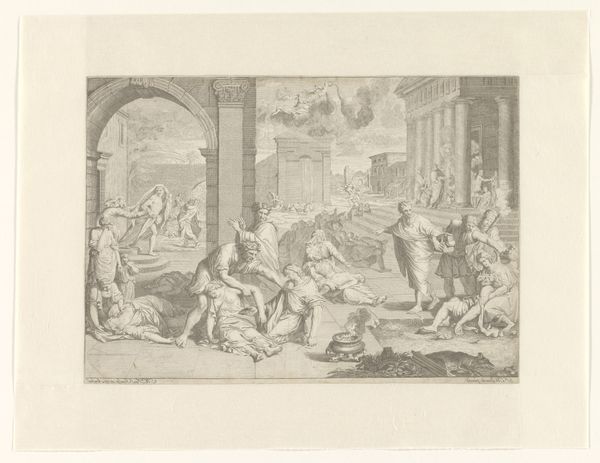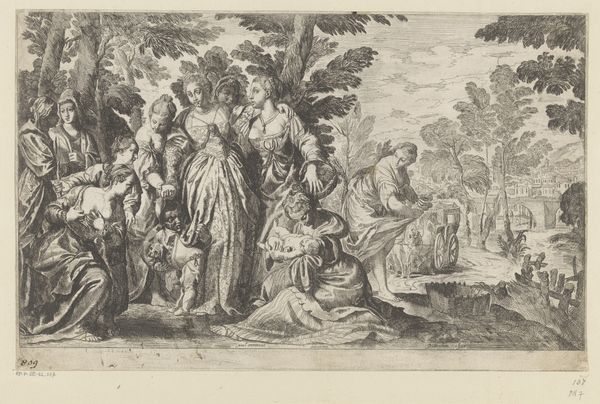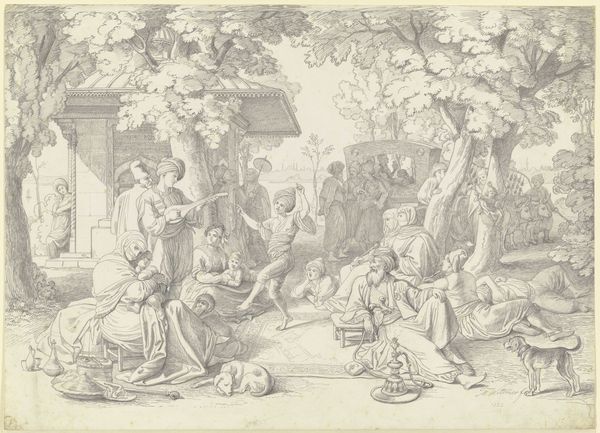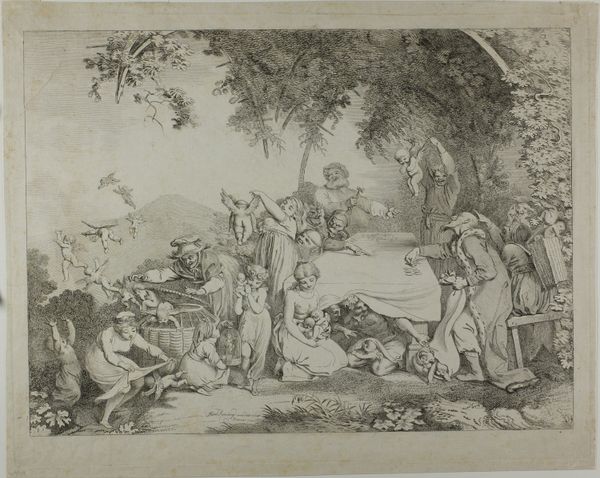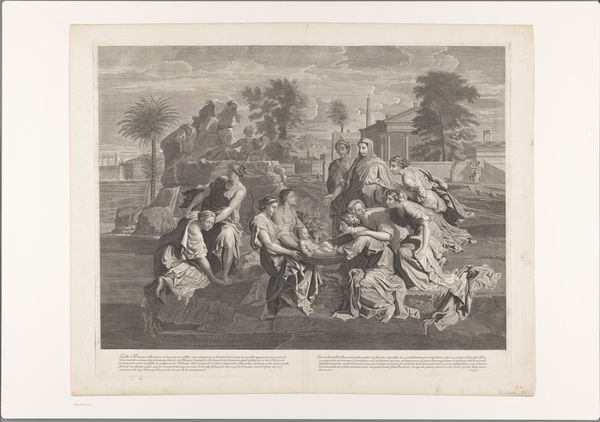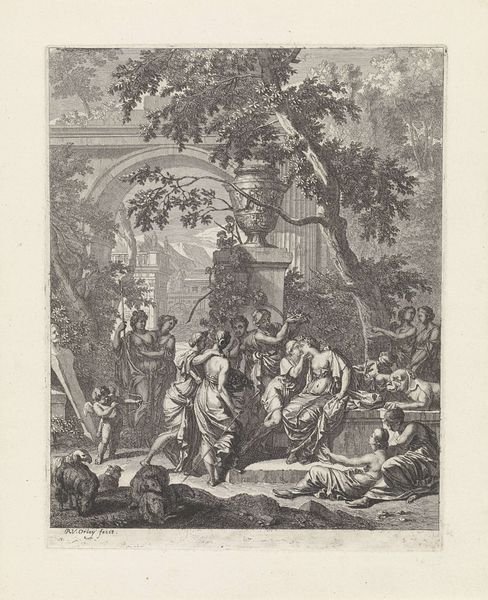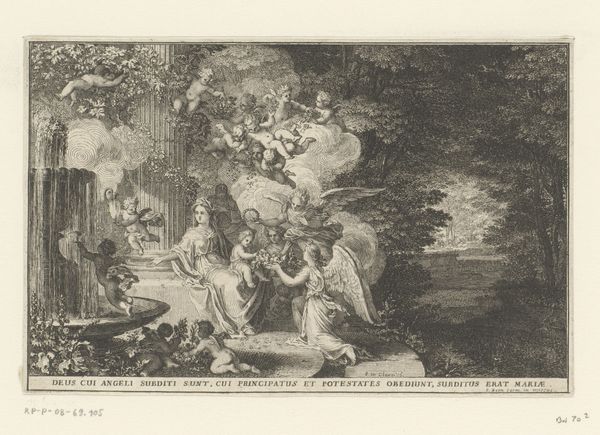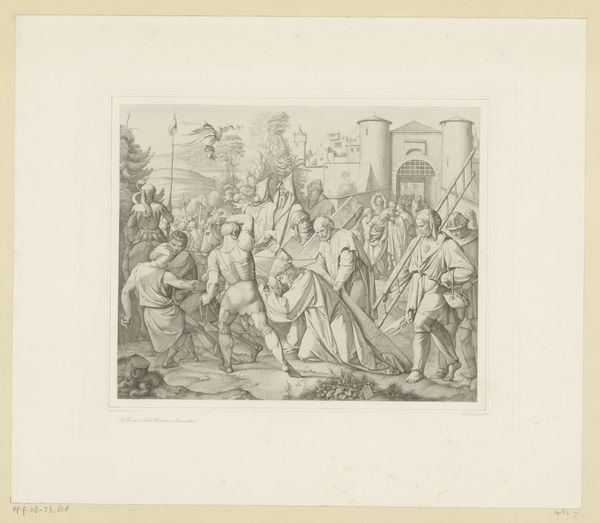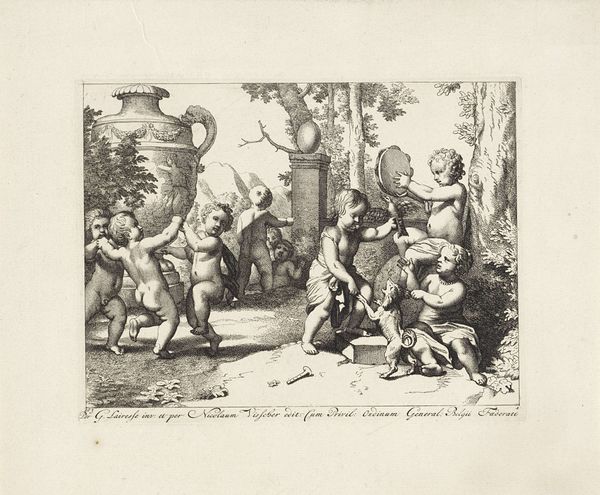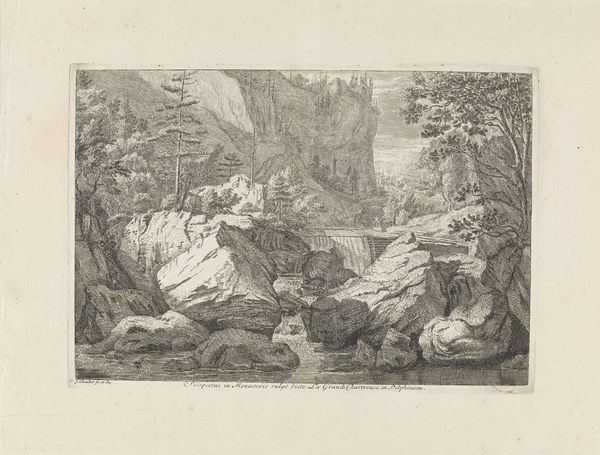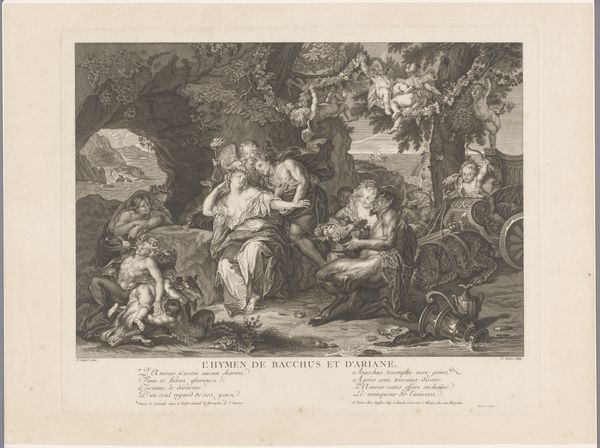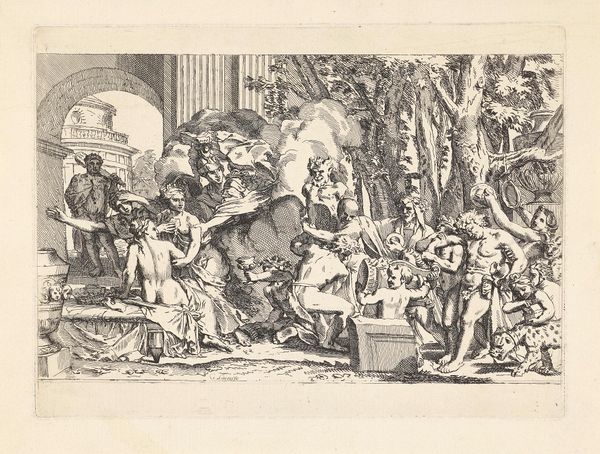
Dimensions: height 503 mm, width 603 mm
Copyright: Rijks Museum: Open Domain
Curator: Here in Gallery 26, we're looking at Louis Simon Lempereur's "Tuin der Liefde," or "Garden of Love," an engraving from 1769, held here at the Rijksmuseum. Editor: My initial impression is one of almost overwhelming busyness, a riot of figures contained within a very formally organized space. There's a dynamism here that both attracts and slightly overwhelms. Curator: Yes, the sheer density of figures invites consideration. Look at the implied labor here: the engraver painstakingly creating gradations of light and shadow with what are likely very simple tools. The Baroque aesthetic certainly valued ornate detail, reflecting the patronage system that emphasized conspicuous display of wealth and status through intricate craftwork. Editor: I’m drawn to how the formal composition really emphasizes a sort of staged theatricality. Note the symmetry, the implied vanishing points guiding your gaze—every visual element contributes to the idealized theme of love. Look at the poses and gestures, each conveying nuanced meanings within the courtly love tradition. Curator: Absolutely, and this is where material conditions meet allegorical representation. Prints such as these were not merely decorative; they served as tools for disseminating cultural values, constructing social identities. Think of how many copies would have been produced, the skill it takes to execute that type of commission... it reveals the workshops behind them and it’s a testament to skilled artisanry reproducing artistic ideas to satisfy the appetite for aristocratic culture. Editor: Notice also how Lempereur manipulates visual weight and contrast. The areas of denser hatching guide the eye toward areas he wants to emphasize. He's really masterful in rendering detail that leads to greater narrative clarity and heightened emotive expression, wouldn’t you agree? Curator: The interplay between visual rhetoric and the material object of the print is what truly interests me. This isn’t just a representation; it is also an object made by human hands under specific economic conditions for specific purposes. Editor: So while it does represent an idealized notion of love and pleasure, the means in which that idea is expressed relies very much on technical brilliance to generate a tangible manifestation of symbolic ideas through tangible methods of craft. I think my eye rests upon Lempereur’s skill and virtuosity more so. Curator: And to mine, how it’s more a representation and outcome of that labor. Editor: A fascinating exchange!
Comments
No comments
Be the first to comment and join the conversation on the ultimate creative platform.
